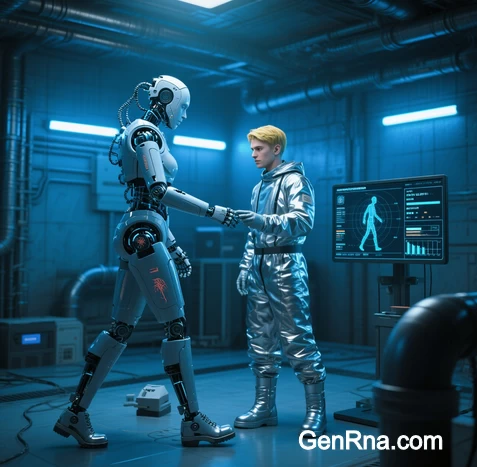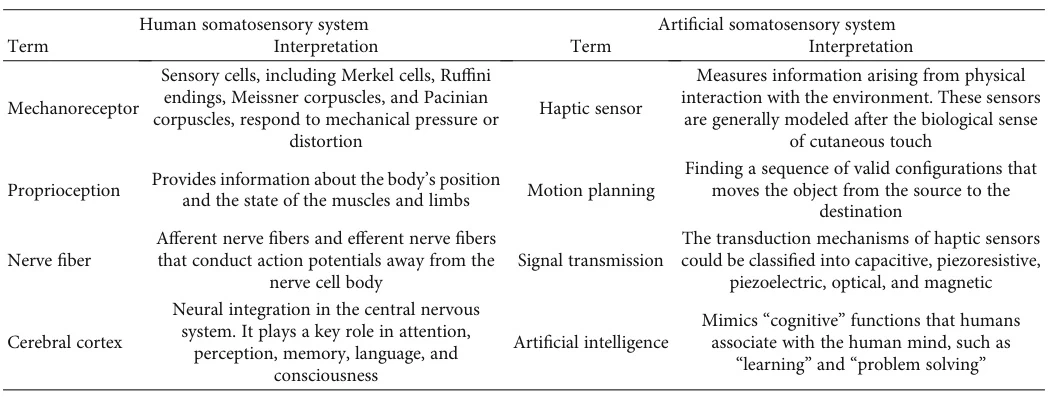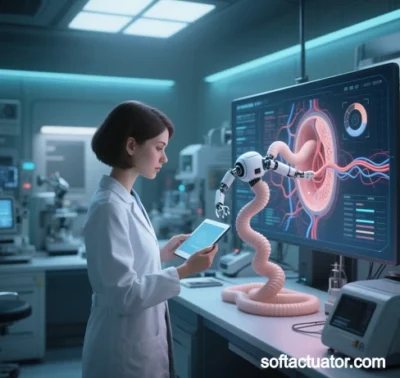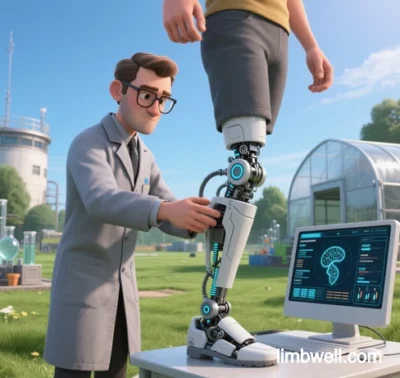 I. Defining the Tactile Lexicon
I. Defining the Tactile Lexicon
Haptisense (from Greek haptikos: “able to touch or perceive”) denotes the artificial replication and interpretation of human tactile perception through integrated sensory systems. This interdisciplinary field bridges neuroscience, robotics, and human-computer interaction to enable machines to:
- Acquire tactile data via bio-inspired sensors
- Process somatosensory information using computational models
- Render force/thermal feedback through haptic interfaces
(Fig. 1: Haptisense framework)
Description: Neuromorphic architecture showing mechanoreceptor-inspired sensors (blue), artificial nerve fibers (green), and cortical processing modules (gold) mimicking biological tactile pathways.

II. Biological Foundations of Touch Perception
A. Neurophysiological Substrates
Human haptisense operates through two complementary sensory modalities:
- Cutaneous Sensation:
- Mediated by specialized mechanoreceptors in the skin:
Receptor Type Stimulus Sensitivity Function Merkel cells Static pressure Texture/shape detection Meissner corpuscles Low-frequency vibration Motion/slip detection Ruffini endings Skin stretch Tangential force Pacinian corpuscles High-frequency vibration Tool-mediated interactions - Receptor density peaks at 150 units/cm² in fingertips
- Kinesthetic Proprioception:
- Detects limb position, movement velocity, and muscle tension via muscle spindles/Golgi tendons
- Enables force modulation during object manipulation

Biological signal integration pathway
III. Artificial Haptisense Implementation
A. Sensor Technologies
Bio-inspired tactile sensors replicate cutaneous function through:
- Piezoresistive Arrays:
- Detect pressure distribution via conductive polymer deformation
- Capacitive Matrices:
- Measure micro-displacements between electrode layers
- Optical Waveguides:
- Capture deformation through light refraction changes
(Fig. 2: Artificial mechanoreceptor design)
Description: Microengineered sensor array mimicking Merkel cell-Ruffini corpuscle spatial distribution, with 400 sensing units/cm² resolution.
- Capture deformation through light refraction changes
B. Computational Perception Engines
Neural processing architectures interpret raw tactile data using:
- Spatiotemporal Filtering:
- Separates static pressure (Merkel-like) from dynamic vibrations (Pacinian-like)
- Multimodal Fusion:
- Combines thermal, vibratory, and force data for material identification
- Deep Tactile Networks:
- ResNet-50 variants achieve 93% object recognition accuracy from texture alone
IV. Medical Applications Revolution
A. Robotic Surgery Enhancement
Haptic feedback systems enable:
- Tissue Differentiation:
- Malignancy detection via stiffness mapping (cancerous tissue = 3-10x stiffer)
- Force Scaling:
- Micro-newton precision during vitreoretinal surgery
- Haptic Memory Playback:
- Recording expert surgeons’ tactile maneuvers for training
(Fig. 3: Surgical haptics workflow)
Description: Da Vinci surgical console providing real-time tactile feedback during minimally invasive procedure, with insets showing tumor stiffness mapping (red) and force telemetry.B. Rehabilitation Technologies
- Prosthetic Sensory Feedback:
- 64-electrode arrays restore texture discrimination in 89% of amputees
- Haptic Neurorehabilitation:
- Exoskeletal gloves improve motor recovery by 40% post-stroke
- Sensory Substitution Devices:
- Vibrotactile belts provide obstacle navigation for the visually impaired
V. Industrial Implementation Framework
A. Emerging Standards
Parameter Human Benchmark Current Tech Capability Spatial Resolution 0.5 mm (fingertips) 1.2 mm (capacitive arrays) Force Detection 0.01 N (Merkel) 0.05 N (piezoresistive) Dynamic Range 0.1-1000 Hz (Pacinian) 5-800 Hz (optical sensors) Performance metrics comparison B. Integration Challenges
- Power Management:
- Flexible triboelectric generators harvest energy from motion
- Neuromorphic Processing:
- Memristor-based chips reduce latency to <5ms (< biological 50ms)
- Multi-Material Printing:
- Hydrogel-elastomer composites enable skin-like conformability
Conclusion: The Tactile Intelligence Era
Haptisense represents the convergence of three technological revolutions:
- Biological Fidelity – Replicating cutaneous/kinesthetic signaling pathways
- Computational Perception – Transforming raw data into semantic touch experiences
- Human-Machine Symbiosis – Creating bidirectional tactile communication frameworks
“Where vision and sound connect us to the world, haptisense connects the world to us – transforming tools into sensory extensions of the human body.”
— IEEE Transactions on Haptics, 2025Ongoing R&D focuses on thermal pain simulation for burn rehabilitation and neural lace interfaces enabling direct cortical haptic projection, with clinical trials projected for 2027.
Data sourced from publicly available references. For collaboration or domain acquisition inquiries, contact: chuanchuan810@gmail.com.
- Piezoresistive Arrays:
- Cutaneous Sensation:




